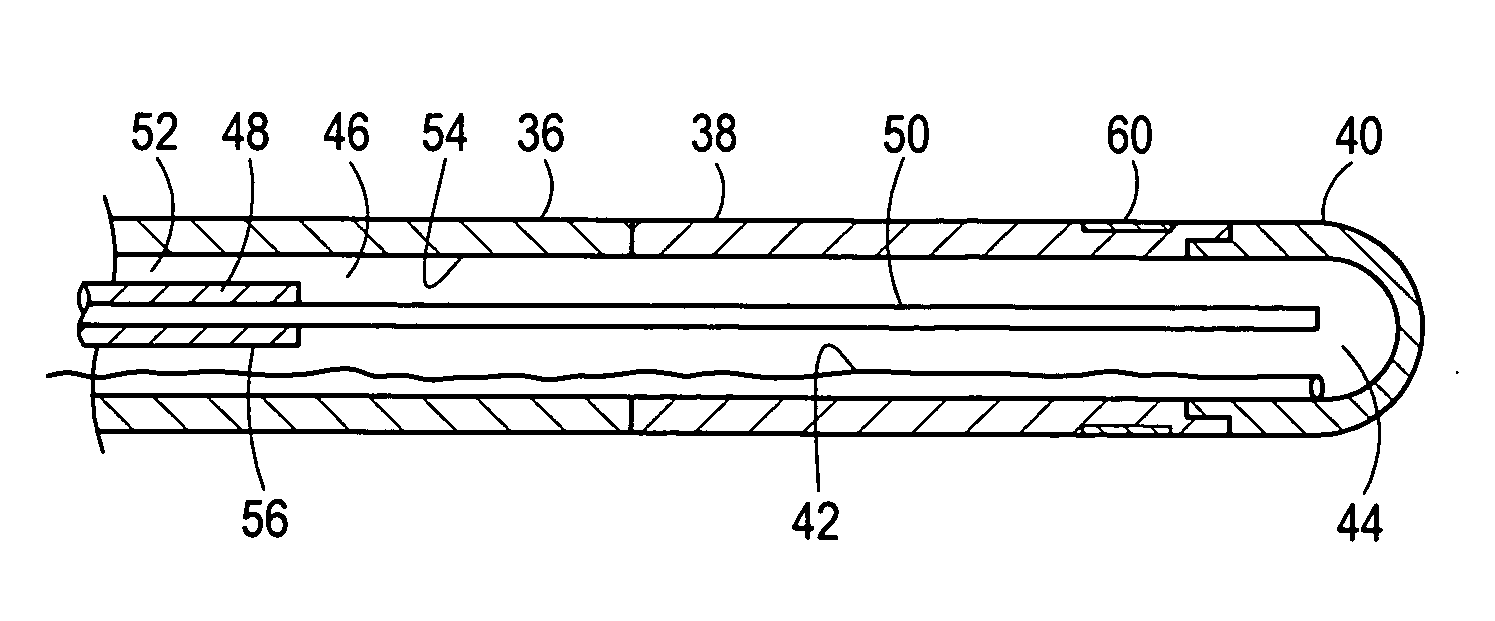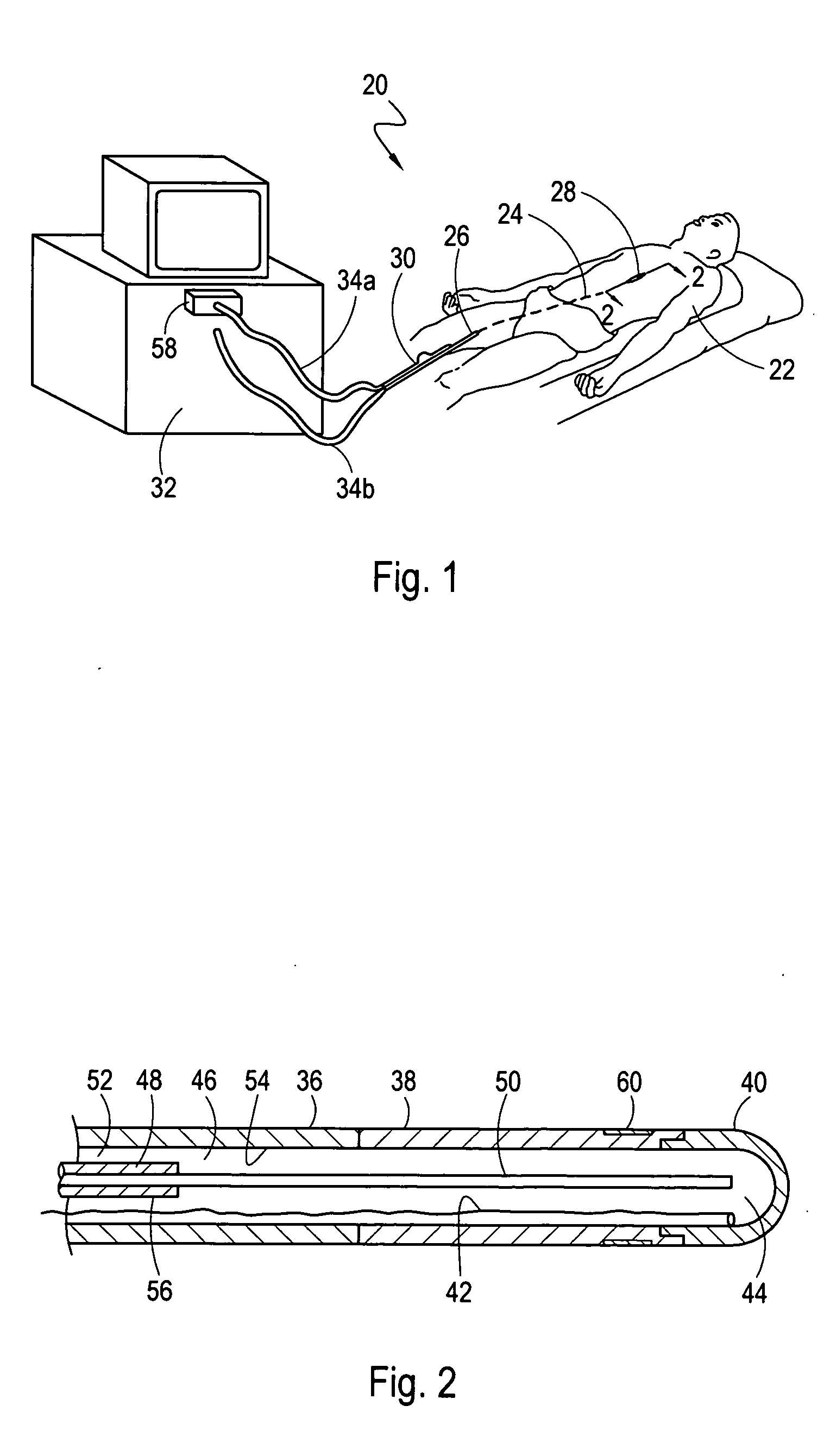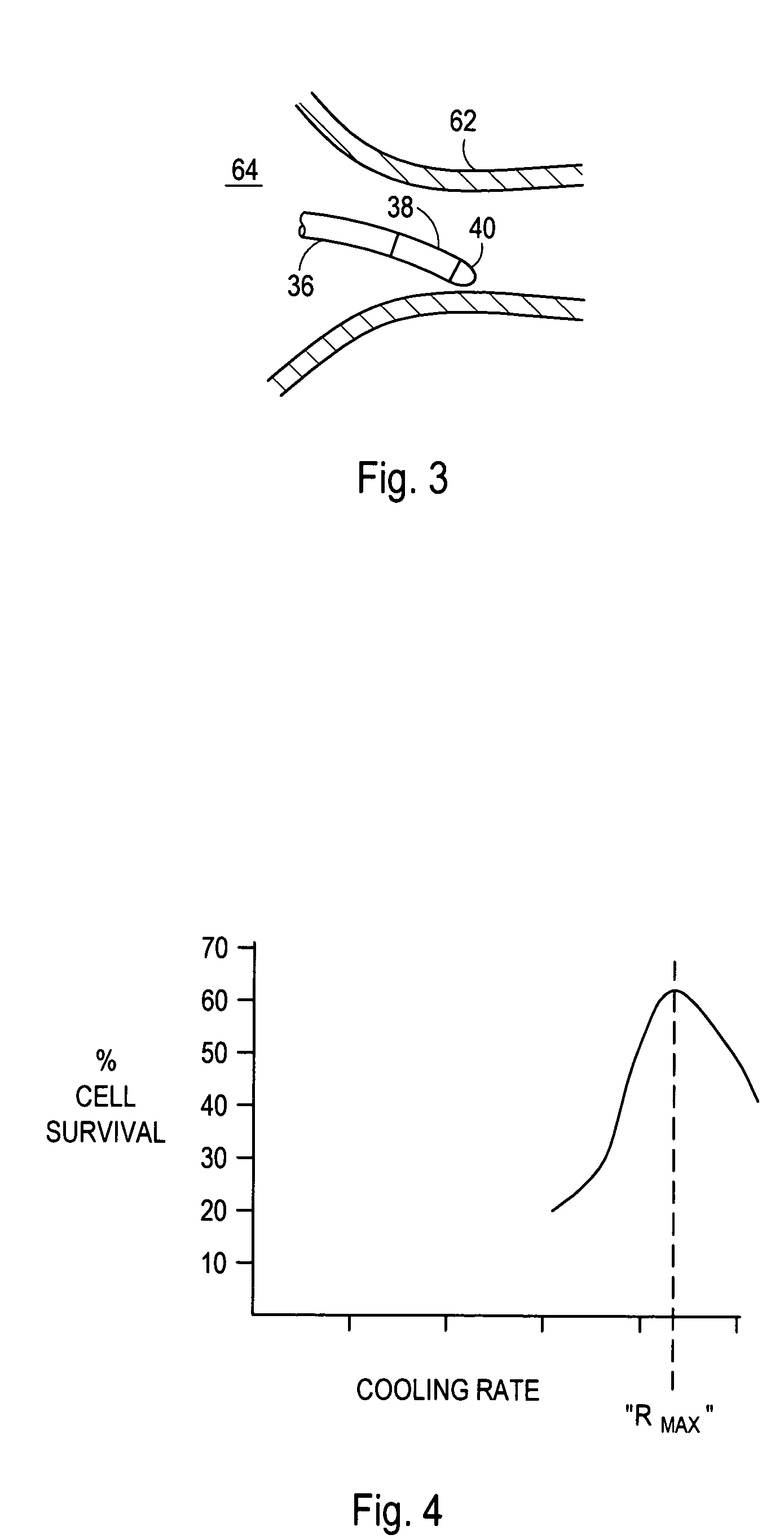Warming gradient control for a cryoablation applicator
- Summary
- Abstract
- Description
- Claims
- Application Information
AI Technical Summary
Benefits of technology
Problems solved by technology
Method used
Image
Examples
Embodiment Construction
[0021] Referring initially to FIG. 1, a system 20 for ablating internal target tissue of a patient 22 is shown. As shown, the system 20 includes an applicator, which for the embodiment shown is a catheter 24. Although the system 20 is described herein for a catheter 24, those skilled in the pertinent art will appreciate that these methods can be implemented with other applicators such as a cryoprobe (not shown) that is configured to contact and ablate exposed tissue.
[0022]FIG. 1 shows that the catheter 24 extends from a proximal end 26, that remains outside the patient's body during a procedure, to a distal end 28. From FIG. 1 it can also be seen that the distal end 28 of the catheter 24 has been inserted into the patient 22 through a peripheral vein, such as the femoral vein, and advanced through the patient's vasculature until the distal end 28 has been positioned in the upper body of the patient 22. FIG. 1 further shows that the proximal end 26 of the catheter 24 is connected to...
PUM
 Login to View More
Login to View More Abstract
Description
Claims
Application Information
 Login to View More
Login to View More - R&D
- Intellectual Property
- Life Sciences
- Materials
- Tech Scout
- Unparalleled Data Quality
- Higher Quality Content
- 60% Fewer Hallucinations
Browse by: Latest US Patents, China's latest patents, Technical Efficacy Thesaurus, Application Domain, Technology Topic, Popular Technical Reports.
© 2025 PatSnap. All rights reserved.Legal|Privacy policy|Modern Slavery Act Transparency Statement|Sitemap|About US| Contact US: help@patsnap.com



